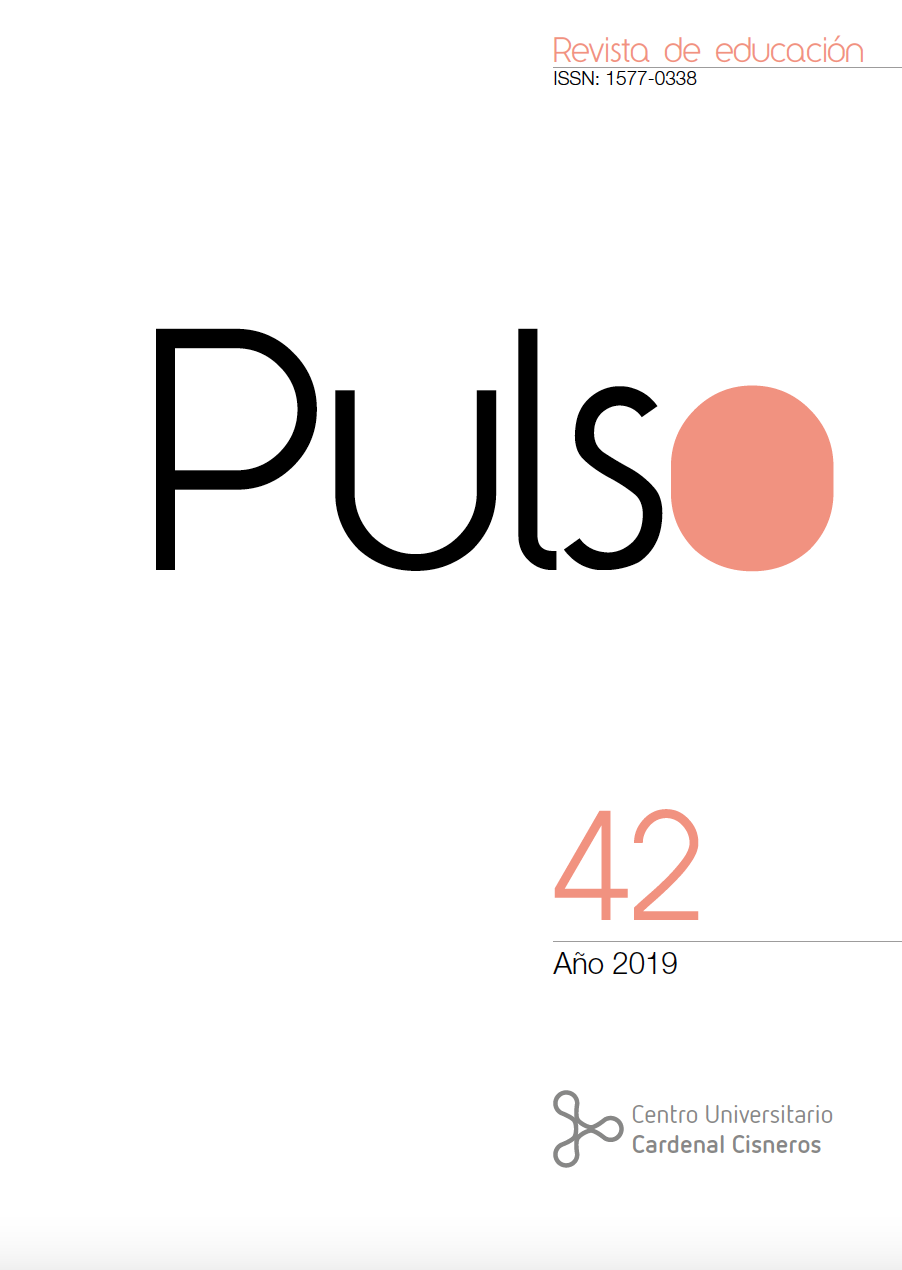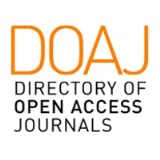Parents’ perspectives on the bilingual program in the region of Madrid
DOI:
https://doi.org/10.58265/pulso.4851Keywords:
CLIL, Madrid Region, Data analysis, Parent Perspectives, ResultsAbstract
This article attempts to identify parent perspectives on Content and Language Integrated Learning in Madrid. It presents an empirical study that was carried out in Compulsory Secondary Education in the region of Madrid. The study seeks to identify the perceptions of parents as regards the bilingual project and their children’s achievements learning a second language. The data are obtained from a qualitative and quantitative questionnaire to examine: students’ use, competence and development of English in class; methodology; materials and resources; evaluation; training and information; mobility; and finally, improvement and motivation towards learning English. Statistical techniques are also included to show if there are statically significant differences concerning the parental variables.
Downloads
References
Azzaro, G., & Rice, R. (2012). Technology in content and language integrated learning. In J. D. Martínez Agudo (Ed.), Teaching and learning English through bilingual education (pp. 149-180). Newcastle upon Tyne, UK: Cambridge Scholars Publishing.
Baker, C., & Jones, S. P. (1998). Encyclopedia of bilingualism and bilingual education. Multilingual Matters.
Breidbach, S., & Viebrock, B. (2013). Content and language integrated learning (CLIL) in Europe: Research perspectives on policy and practice. Mehrsprachigkeit in schule und unterricht. New York: Peter Lang.
Bruton, A. (2013). CLIL: Some of the reasons why… and why not. System, 41, 587-597.
Byram, M., & Grundy, P. (2003). Introduction: Context and culture in language teaching and learning. In M. Byram, & P. Grundy (Eds.), Languages for intercultural communication & education: Context and culture in language teaching and learning (pp. 1-17). Clevedon: Multilingual Matters. Retrieved from http://www.ebrary.com
Cenoz, J., & Genesee, F. (1998). Beyond bilingualism: Multilingualism and multilingual education. Multilingual Matters.
Cummins, J. (2000). Language, power and pedagogy: Bilingual children in the crossfire. Clevedon: Multilingual Matters.
Dalton-Puffer, C. (2011). Content-and-language integrated learning: From practice to principles? Annual Review of Applied Linguistics, 31, 182-204.
De Graaff, R., Koopman, G. J., & Westhoff, G. (2007). Identifying effective L2 pedagogy in content and language integrated learning (CLIL). Vienna English Working Papers, 16(3), 12-19. doi: 10.2167/beb462.0
Gerena, L., & Ramírez-Verdugo, M. D. (2014). Analyzing bilingual teaching and learning in Madrid, Spain: A Fulbright scholar collaborative research project. Gist: Education and Learning Research Journal, 8, 118-136.
González, J. M. (2008). Encyclopedia of bilingual education. Los Angeles: SAGE Publications, Inc.
Grosjean, F. (2010). Bilingual: Life and reality. Cambridge, MA, USA: Harvard University Press.
Hamers, J. F., & Blanc, M. (2000). Bilinguality and bilingualism. Cambridge University Press.
Hindin, A. (2010). Linking home and school: Teacher candidates’ beliefs and experiences. The School Community Journal, 20(2), 73- 90.
Kostogriz, A. (2009). Professional ethics in multicultural classrooms: English, hospitality and other. In J. Miller, A. Kostogriz, & M. Gearon (Eds.), New perspectives on language and education: Culturally and linguistically diverse classrooms: New dilemmas for teachers (pp. 132-150). Clevedon, GBR: Multilingual Matters.
Lancaster, N. K. (2016). The effects of content and language integrated learning on the oral skills of compulsory secondary education students: A longitudinal study (Doctoral dissertation). Jaen University, Jaen, Spain.
Lasagabaster, D., & Doiz, A. (2016). CLIL students’ perceptions of their language learning process: Delving into self-perceived improvement and instructional preferences. Language Awareness. 25(1-2), 110-126. doi: 10.1080/09658416.2015.1122019
Llinares, A., & Dafouz, E. (2010). Content and language integrated language programmes in the Madrid region: Overview and research findings. In D. Lasagabaster, & Y. Ruiz de Zarobe (Eds.), CLIL in Spain: Implementation, results and teacher training (pp. 95-113). Newcastle upon Tyne: Cambridge Scholars Publishing.
Llinares, A, Morton, T., & Whittaker, R. (2012). The roles of language in CLIL. Cambridge: Cambridge University Press.
Lindholm-Leary, K.J. (2001). Bilingual education and bilingualism, 28: Dual language education. Clevedon, GBR: Multilingual Matters.
Lorenzo, F., Casal, S., & Moore, P. (2009). The effects of content and language integrated learning in European education: Key findings from the Andalusian bilingual sections evaluation project. Applied Linguistics, 31(3), 418-442.
Marsh, D. (2002). CLIL/EMILE. The European dimension. Actions, trends, and foresight potential. Jyväskylä: University of Jyväskylä. Retrieved from http://ec.europa.eu/education/languages/pdf/doc491_en.pdf
Marsh, D. (2012). Content and language integrated learning CLIL) a development trajectory. (Doctoral Dissertation). Córdoba: University of Cordoba Academic Press.
Martínez Adrián, M., & Gutiérrez Mangado, M. J. (2015). Is CLIL instruction beneficial in terms of general proficiency and specific areas of grammar? Journal of Immersion and Content-Based Language Education, 3(1), 51-76.
McNeal, R. B., Jr. (2014). Parent involvement, academic achievement and the role of student attitudes and behaviors as mediators. Universal Journal of Educational Research, 2(8), 564-576.
Meyer, O. (2010). Towards quality CLIL: Successful planning and teaching strategies. Pulso. 33, 11-29.
Pérez Cañado, M. L. (2011). The effects of CLIL within the APPP: Lessons learned and ways forward. In R. Crespo, & M. García De Sola (Eds.), Studies in honour of Ángeles Linde López (pp. 389-406). Granada: Universidad de Granada.
Pérez Cañado, M. L. (2016). Evaluating CLIL programmes: Instrument design and validation. Pulso: Revista de Educación, 39, 79-112.
Rascón Moreno, D. J., & Bretones Callejas, C. M. (2018). Socioeconomic status and its impact on language and content attainment in CLIL contexts. Porta Linguarum, 29, 115-135.
Roos, J. (2014). CLIL: Approaching content through communicative interaction. In R., Kupetz, & C., Becker (Eds.), Fremdsprachendidaktik inhalts- und lernerorientiert/ Foreign language pedagogy -content- and learner-oriented: Content and language integrated learning by interaction (pp. 101-122). Frankfurt am Main, DEU: Peter Lang.
Scott, D., & Beadle, S. (2014). Improving the effectiveness of language learning: CLIL and computer assisted language learning. London: Watling House.
Tabatadze, S. (2015). Factors influencing the effectiveness of bilingual educational programs: The prospects of pilot programs in Georgia. Sino-US English Teaching, 12(2), 93-109.
Vez, J. M. (2009). Multilingual education in Europe: Policy developments. Porta Linguarum, 12, 7-24.
Wolff, D. (2011). CLIL and learner autonomy: Relating two educational concepts. Education et Sociétés Plurilingues, 30, 69- 80.
Downloads
Published
How to Cite
Issue
Section
License
Copyright (c) 2022 Pulso. Revista de educación

This work is licensed under a Creative Commons Attribution-NonCommercial-NoDerivatives 3.0 Unported License.
This journal offers immediate open access to its content based on the idea that offering readers free access to research favours a global exchange of knowledge.
Papers are published in the electronic version of the journal under a Creative Commons License: Attribution-NonCommercial-No derivatives 4.0 International
Authors are allowed and encouraged to promote the post-print version (reviewed and accepted for publication version) of their work online before publishing them. This favours their earlier circulation and dissemination and thus a possible increase in their citation and reach among the academic community.














